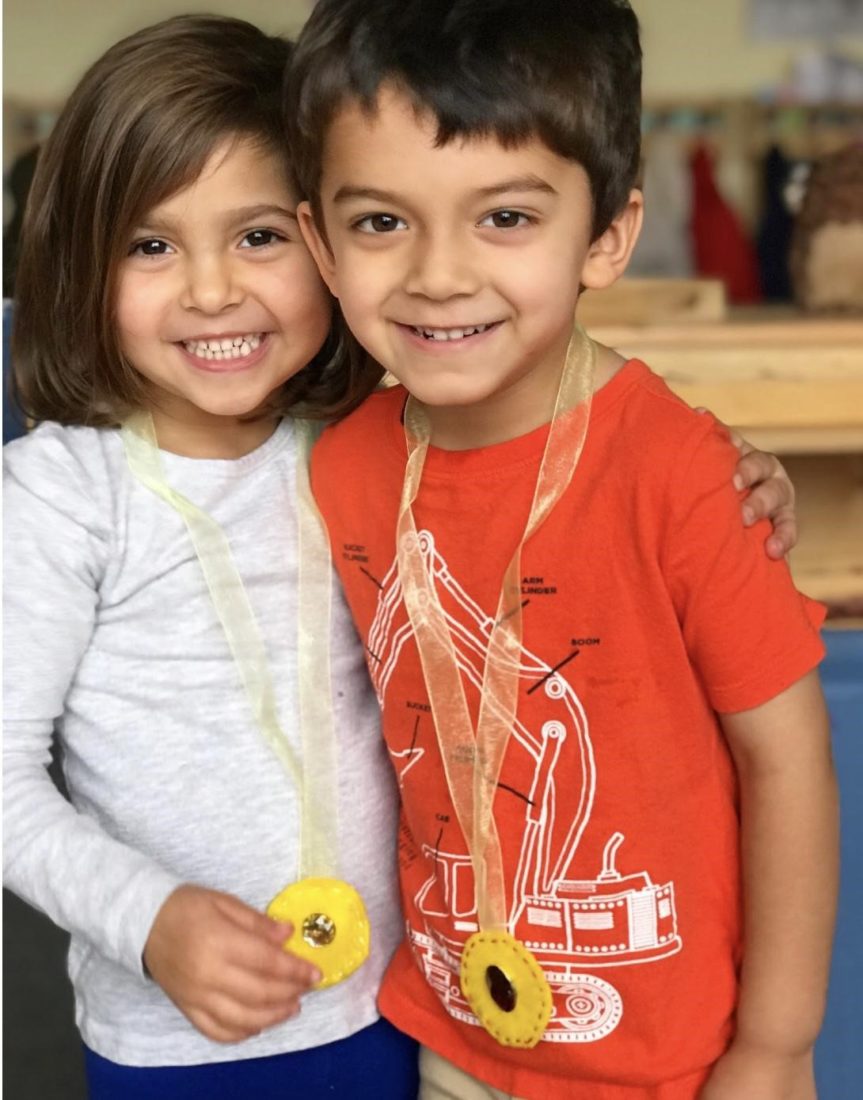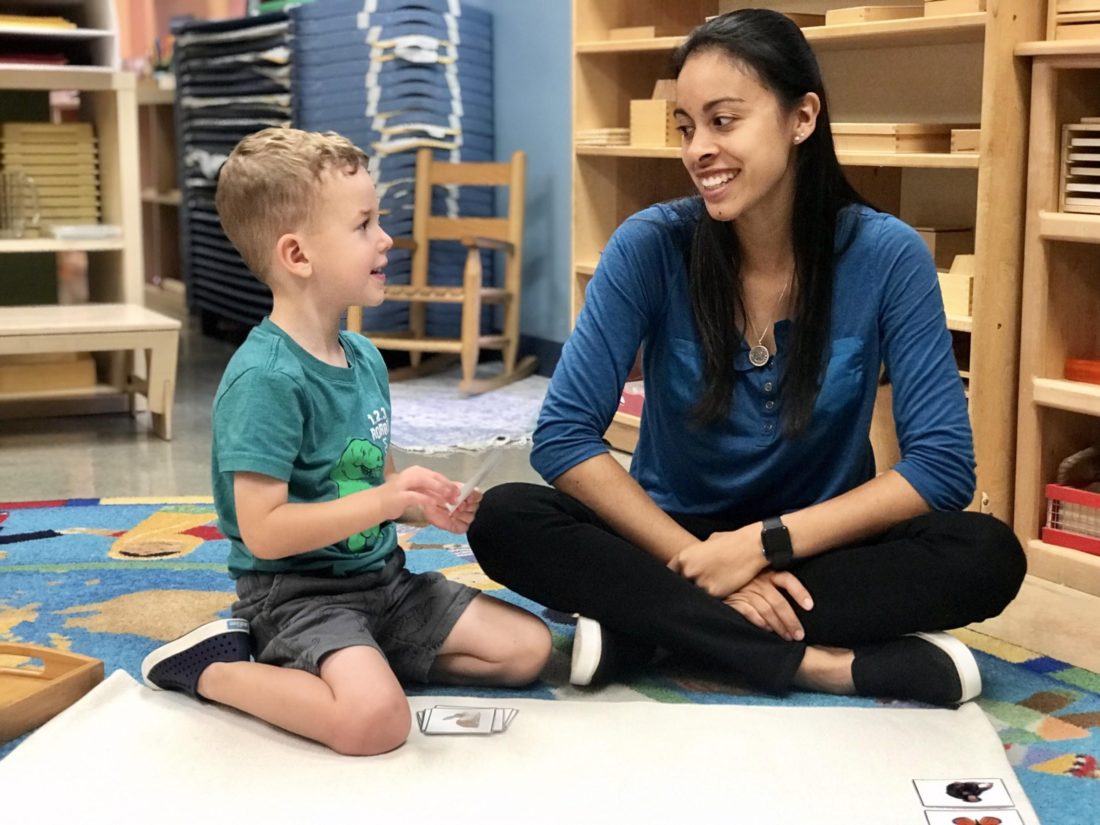
“Peace is what every human being is craving, and it can be brought about by humanity through the child.” Maria Montessori

On September 21st, we celebrated International Peace Day. Children seem to have an innate ability to interpret complicated concepts in a simple way, so I thought it appropriate to ask them what it means to be peaceful.
“Peace is when you respect other people’s bodies and be quiet so you can listen to what they say.”
Ellie, Age 3
“Peace is when you say ‘You can come sit with me or you can come play with me.’”
Satya, Age 4
“Peace is when you are quiet, stop talking so you can listen, and don’t touch other people’s work.”
George, Age 4
“Peace is when you’re sweet and ask someone how was their day.”
Nikolai, Age 4
“Peace means being nice, giving people flowers, hugging them, and sharing kind love.”
Eliana, Age 4
As usual, I was surprised at their summations and curious where they got these ideas about what it means to be kind to one another. Unanimously they replied they learned from their teachers and their parents.
There are some formal Montessori lessons where children learn about peace, grace, and courtesy, but I’d venture to guess they learned primarily by watching and absorbing their everyday interactions with the adults in their lives. Here are some ways we can bring peace into our environments and share that with our little ones:
- Model respect. It’s easy to forget that children learn by watching us. They cannot be respectful, patient, and empathetic if we don’t consistently show them what that looks like. Be cognizant of the fact that children are watching and learning from your every move; your tone, words, and body language with them as well as other adults you encounter.
- Model active listening. Make eye contact and commit to acknowledging when a child wants attention, even if your acknowledgement is “I am speaking with someone else right now, and will be ready to hear what you have to say in just a minute.” This is another way we demonstrate respect for others.
- Model honesty. Try as we might, we will never be perfect. It’s important to show children that it’s okay to make mistakes and to show ourselves and others grace and the space to do so. Sometimes we may have had a bad day – sat in traffic for hours, came in late and frazzled, and still have to make dinner and do the laundry. We may not always react to our children as our best selves. Work hard to prepare yourself to meet the needs of your child, but when you do react impulsively, (which is inevitable) it’s just as valuable to come back and admit that you made a mistake and demonstrate an authentic apology.
- Model acceptance. Accept and honor that each child moves at his/her own pace and is their own individual person. Some may take 2 minutes to put on their shoes, others may take 20. When we model acceptance and unconditional respect we teach a younger generation to do that for others.
- Model Self Care. – When we take time to fill up our own cup, we are better able to fill others’. We are better able to reply intentionally; respond, rather than react.
While I learned a lot from asking Primary children what peace means, what was even more impressive was what I observed. I spent time in 3 different classrooms for only a few minutes each, and what I saw was not just amazing, but encouraging. In one classroom, I heard a little 3 year old girl quietly, politely saying “Excuse me,” while patiently waiting and trying to pass behind me. I saw one little girl showing another who was struggling to complete a Bow Tying Frame, step in and show her how to complete, then watch patiently while she gave her a turn to try.
It’s not every day we see or hear stories of peace nowadays. We have to look a little harder, but they’re there. We have the power and opportunity to model peace in our interactions with the little ones and help spread it one hug, one kind word, one child at a time.


